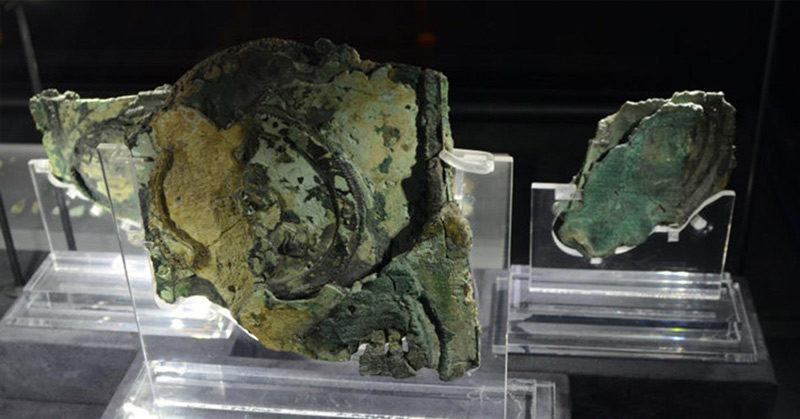The Ancient Greeks were known for their understanding of many principles of science. Two that are particularly notable are in the fields of astronomy and mechanical know-how. After finally deciphering the inner workings of an Ancient Greek device, however, researchers have determined that the Greeks’ understanding of these concepts was far greater than what we ever imagined.
The Ancient Device
The Antikythera mechanism was first discovered in a shipwreck off the coast of Greece near Antikythera in the year 1900. Two years later, archaeologist Valerios Stais guessed that the device, which had the appearance of a corroded lump, was some kind of astronomy-based clock.
At the time, most people in the scientific community did not support his hypothesis, because they thought that something so sophisticated was not possible for a two thousand-year-old artifact.
It wasn’t until 1974 that British historian Derek J. de Solla Price determined that the device was from 150 to 100 BC Greece. Upon studying the mysterious device, he came to the conclusion that it used meshing bronze gears connected to a crank to move the hands on the clock’s face in accordance with the Metonic Cycle, which is the 235-month pattern that ancient astronomers used to predict eclipses [1].
When you hold the device in your hands, you can track the paths of the sun, moon, and planets with remarkable accuracy. X-ray images of the impressive clock, however, were difficult to read and interpret, so historians largely ignored the device, which was left sitting in the National Archaeological Museum in Athens [2].
Read: Ancient tree with record of Earth’s magnetic field reversal in its rings discovered
An Ancient Computer
Many scientists refer to the clock as the world’s first mechanical computer. Solla Price deduced that the mechanism was used to predict the position of the planets and the start in the sky depending on the calendar month.
The clock’s main gear would move to represent the calendar year, which would then in turn move many separate smaller gears that represented the motions of the planets, sun, and moon. The user could set the clock to the calendar date and get an approximation for where those celestial objects would be in the sky on that date.
It was a computer in the sense that the user could enter a few variables, which would trigger a series of complicated mathematical calculations. This ancient device worked in a similar way to mechanical calculators that didn’t arrive in Europe until the 1600s [3].
Read: Perfectly preserved ancient Roman mosaic floor discovered in Italy
The Ancient Device Finally Reveals its Secrets
Part of the difficulty archaeologists and scientists have had with understanding how the clock worked was that the inscriptions written on the device’s parts. They were in ancient Greek and were too tiny to read.
Finally, cutting-edge imaging technology allowed researchers to see the writing more clearly, and they’ve now been able to read about 35 hundred characters explaining the device.
The writing verified how the device worked, and also revealed that the text refers to upcoming eclipses by color, which tells us that they were viewed as having some kind of oracular meaning.
The writing also reveals that it was built by more than one person on the island of Rhodes, and that it was likely not the only one of its kind [1].
This incredible device tells us that the Ancient Greeks were far more advanced in their scientific and mechanical knowledge than we realized. It also gives us a glimpse into how they viewed their universe- that nature worked according to predefined rules, an approach that has formed our own modern scientific understanding [2].
Keep Reading: One Of The Few Known Intact Pyramid Capstones In Existence
- https://bigthink.com/robby-berman/an-ancient-device-too-advanced-to-be-real-gives-up-its-secrets-at-last
- https://www.smithsonianmag.com/history/decoding-antikythera-mechanism-first-computer-180953979/
- https://www.vox.com/science-and-health/2017/5/17/15646450/antikythera-mechanism-greek-computer-astronomy-google-doodle

